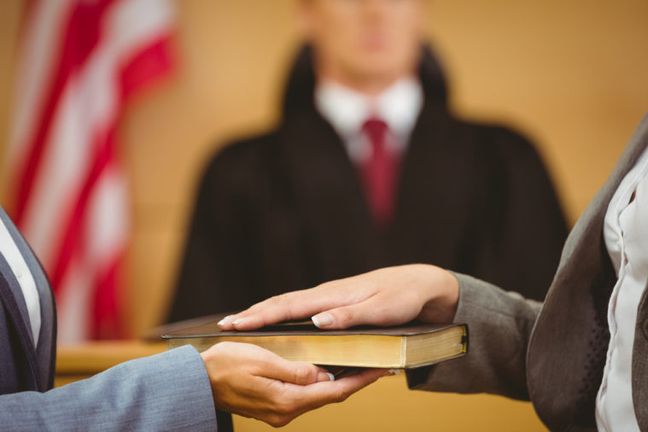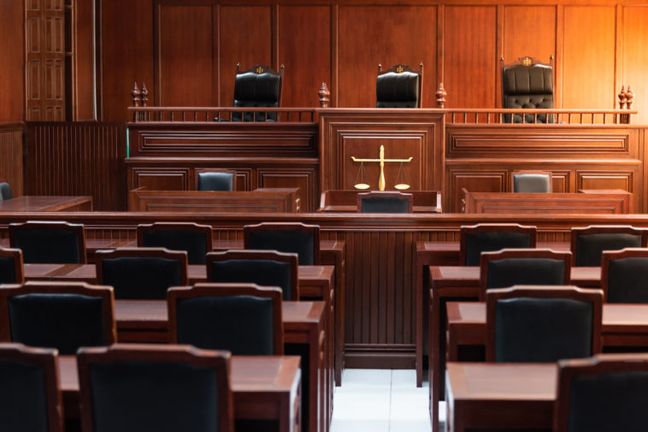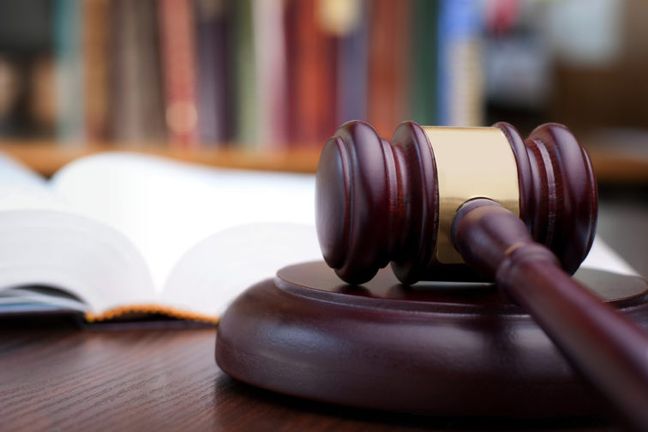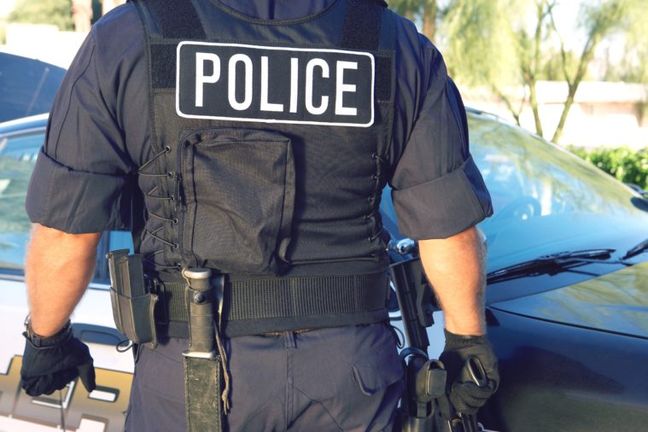An expert witness may be pivotal in determining a win or a loss at trial. Sometimes, one great expert witness may be better than many good expert witnesses. Wisely securing a great expert witness who possesses the proper expertise(s) to propound your arguments will likely ensure safe passage on the journey through trial. And appeal. And review.
The Supreme Court of Washington reviewed the latitude permitted to experts when testifying. In L.M. by and through Dussault v. Hamilton, 436 P.3d 803, (2019), the court analyzed expert testimony under Frye and ER 702 to determine if a biomechanical engineer could testify regarding the forces of childbirth. The court reviewed the trial court’s decision under Frye de novo and the decision under ER 702 for abuse of discretion. The court affirmed the ruling of the trial court and The Court of Appeals.
L.M. was injured at birth on April 4, 2010, and sued the delivering midwife, Hamilton. Hamilton’s notes show she performed an “assisted shoulder delivery” and L.M.’s arm was “weak at side.” Five months after birth, L.M. underwent exploratory surgery, which revealed significant injuries to L.M.’s brachial plexus.
The brachial plexus transports signals from the spinal cord to the arm via nerves. The nerves are susceptible to injuries, including avulsions and ruptures. Most brachial plexus injuries (BPIs) heal in six months, but avulsions and ruptures are permanent.
All five of L.M.’s brachial nerve roots were injured: two were ruptured, one was avulsed, and two were partially avulsed. He continues to experience pain and limited use of his arm.
L.M. alleged Hamilton was negligent in responding to his shoulder dystocia, an emergency where a baby’s shoulder gets stuck during labor. L.M. claimed Hamilton used excessive force to free his shoulder and it was this excessive force, not the natural forces of labor (NFOL), which caused his ruptures and avulsions.
Hamilton did not agree and argued L.M. did not experience shoulder dystocia and it was the NFOL, which caused his injuries. Hamilton hired a biomechanical engineer, Dr. Allen Tencer, to support her defense.
Frye and ER 702
L.M. moved to exclude NFOL evidence as not generally accepted under Frye and not helpful to the jury under ER 702. L.M. utilized three experts to support his argument. L.M.’s obstetrician-gynecologist expert testified an avulsion or rupture cannot occur from NFOL, even though he had not done any research on nerve avulsion in over ten years. L.M.’s pediatric neurologist testified it was improbable NFOL were solely responsible and avulsion injuries are caused only by excessive manual traction. L.M.’s midwife expert testified she had never heard of or read any medical literature saying BPIs could be caused by NFOL.
Hamilton relied heavily on a survey of medical literature from obstetrician-gynecologist Dr. Robert DeMott. The literature does show NFOL can cause a BPI, but does not say what types of BPI are included. The literature also showed the prior school of thought utilized by L.M.’s experts was turning, and there was a trend towards an “evolution of science” regarding NFOL and BPIs. A key piece of literature used by Dr. DeMott was a 2014 Report from the American College of Obstetrics and Gynecologists (ACOG). The Report shows NFOL can cause permanent BPIs, where injuries occur entirely unrelated to traction.
Initially, the trial court granted L.M.’s motion to exclude NFOL evidence. The trial court ruled under ER 702, the NFOL theory was too speculative on causation because it failed to explain how natural forces cause avulsions and ruptures. The trial court also rejected the NFOL theory under Frye, holding the scientific community had not reached “consensus” on whether “the permanent avulsion injuries can be caused by natural forces.”
Hamilton moved for reconsideration, citing all courts which had previously allowed NFOL evidence and filing additional expert declarations. The trial court reversed its prior ruling. The trial court ruled under ER 702, NFOL evidence had sufficient foundation to assist the jury. Any gaps in the science result from “ethical considerations,” including the notion that researchers cannot experiment on babies to determine the force required to cause an avulsion. Under Frye, the trial court noted an expert’s ultimate opinion on causation does not have to be generally accepted, so long as the opinions are based on accepted methodology.
Dr. Tencer
A significant issue in this case was whether the trail court erred in allowing Dr. Tencer’s testimony. Dr. Tencer testified regarding the endogenous and exogenous forces involved in childbirth. However, Dr. Tencer primarily testifies in motor vehicle accident cases—he has never testified in a case involving labor and delivery. He does not hold a medical degree and has never received specialized training in the mechanics of childbirth, although he has researched the strength of the spinal cord and nerve roots. To prepare for the case, he studied the latest science on the mechanics of childbirth, including the ACOG Report.
Dr. Tencer concluded from a biomechanical forces perspective it is not possible to differentiate whether the BPI suffered by L.M. resulted in exogenous, endogenous, or some combination of both forces. L.M. opposed this testimony arguing Dr. Tencer was not an obstetrician nor a housewife and was testifying far out of his expertise. The trial court ruled Dr. Tencer could testify. The trial court found he was qualified and his testimony would help the jury understand the forces at play, satisfying ER 702’s prerequisites to admissibility.
Frye Analysis
The Washington Supreme Court held that Frye does not bar Hamilton’s experts from opining NFOL caused L.M.’s avulsions and ruptures. Hamilton argued the scientific community generally accepts that NFOL could cause permanent BPIs. Because avulsions and ruptures are permanent BPIs, Hamilton argued NFOL could have caused L.M.’s BPI.
L.M. argued the relevant scientific community did not generally accept NFOL could cause L.M.’s specific BPI. He further argued the literature is silent on whether NFOL could cause such a severe BPI. L.M’s experts recognized the possibility of permanent BPIs, but disagreed over what types of BPIs this includes.
Hamilton’s experts argued science shows NFOL could cause permanent BPIs. They then deduced NFOL could cause avulsions and ruptures, which are permanent BPIs. With the science underlying this deduction being generally accepted, Frye is satisfied.
ER 702 Analysis
The court found courts look beyond academic credentials in determining whether a witness is an expert and must consider whether the expert has sufficient expertise in the relevant specialty. Dr. Tenser was not specially trained in the biomechanics of childbirth, but was qualified to testify about biomechanical forces in general. He had personally researched the spine and for this case, he looked at the latest science regarding the biomechanics of childbirth.
The court specifically notes this is a close call. The court held, if a basis for admission of evidence is fairly debatable, a court will not disturb the trial court’s ruling. The court ruled the trial court did not abuse its discretion.
Conclusion
Trial courts have broad discretion in deciding on whether evidence is admissible and a broader discretion in deciding on whether an expert witness may testify. Use these discretions. Broadly. And win.

 Cannabis Workers Allege Quota to Trim 4 Pounds a Day Violates the California Labor Code
Cannabis Workers Allege Quota to Trim 4 Pounds a Day Violates the California Labor Code
 The Ninth Circuit Reminds Us: Every Word Matters
The Ninth Circuit Reminds Us: Every Word Matters
 NO WAY, PRO SE! The Consequences of Abusing the Judicial System as a Pro Se Litigant in Colorado
NO WAY, PRO SE! The Consequences of Abusing the Judicial System as a Pro Se Litigant in Colorado
 Victim of Financial Mismanagement or Unlawful Retaliation? New Jersey City University Program Founder Claims School Retaliated After Reporting Alleged Sexual Harassment
Victim of Financial Mismanagement or Unlawful Retaliation? New Jersey City University Program Founder Claims School Retaliated After Reporting Alleged Sexual Harassment
 “Real Housewives” Gets a Reality Check
“Real Housewives” Gets a Reality Check
 Missing a Chapter: Insufficiency of Expert Deposition Testimony in Medical Malpractice Litigation
Missing a Chapter: Insufficiency of Expert Deposition Testimony in Medical Malpractice Litigation
 Crash Course: Why Summary Judgment Misses the Mark in Illinois Multi-Cause Limousine Crash Collision
Crash Course: Why Summary Judgment Misses the Mark in Illinois Multi-Cause Limousine Crash Collision
 Bitter Truths: Lead, Cadmium, and Defective Pleadings in California Chocolate Class Action
Bitter Truths: Lead, Cadmium, and Defective Pleadings in California Chocolate Class Action
 The Law of Unintended Consequences: Including Insurance Brokers in Litigation Strategy Communication May Waive the Attorney-Client Privilege
The Law of Unintended Consequences: Including Insurance Brokers in Litigation Strategy Communication May Waive the Attorney-Client Privilege
 Liability Waivers: A Cautionary Tale of the Inconspicuous Waiver
Liability Waivers: A Cautionary Tale of the Inconspicuous Waiver
 Whose Employee Are They Anyway?
Whose Employee Are They Anyway?
 One For the Landlords in Washington
One For the Landlords in Washington
 Covenant Judgments Can Be the Foundation of Bad Faith Claims
Covenant Judgments Can Be the Foundation of Bad Faith Claims
 Falling for Liquor: Washington Court Reaffirms Premises Liability Law
Falling for Liquor: Washington Court Reaffirms Premises Liability Law
 New Pathways to Recover for Intentional Inference with a Corpse in Washington
New Pathways to Recover for Intentional Inference with a Corpse in Washington
 When Washington Statute and The Constitution (Somewhat) Collide
When Washington Statute and The Constitution (Somewhat) Collide
 Opening the Wrong Doors
Opening the Wrong Doors